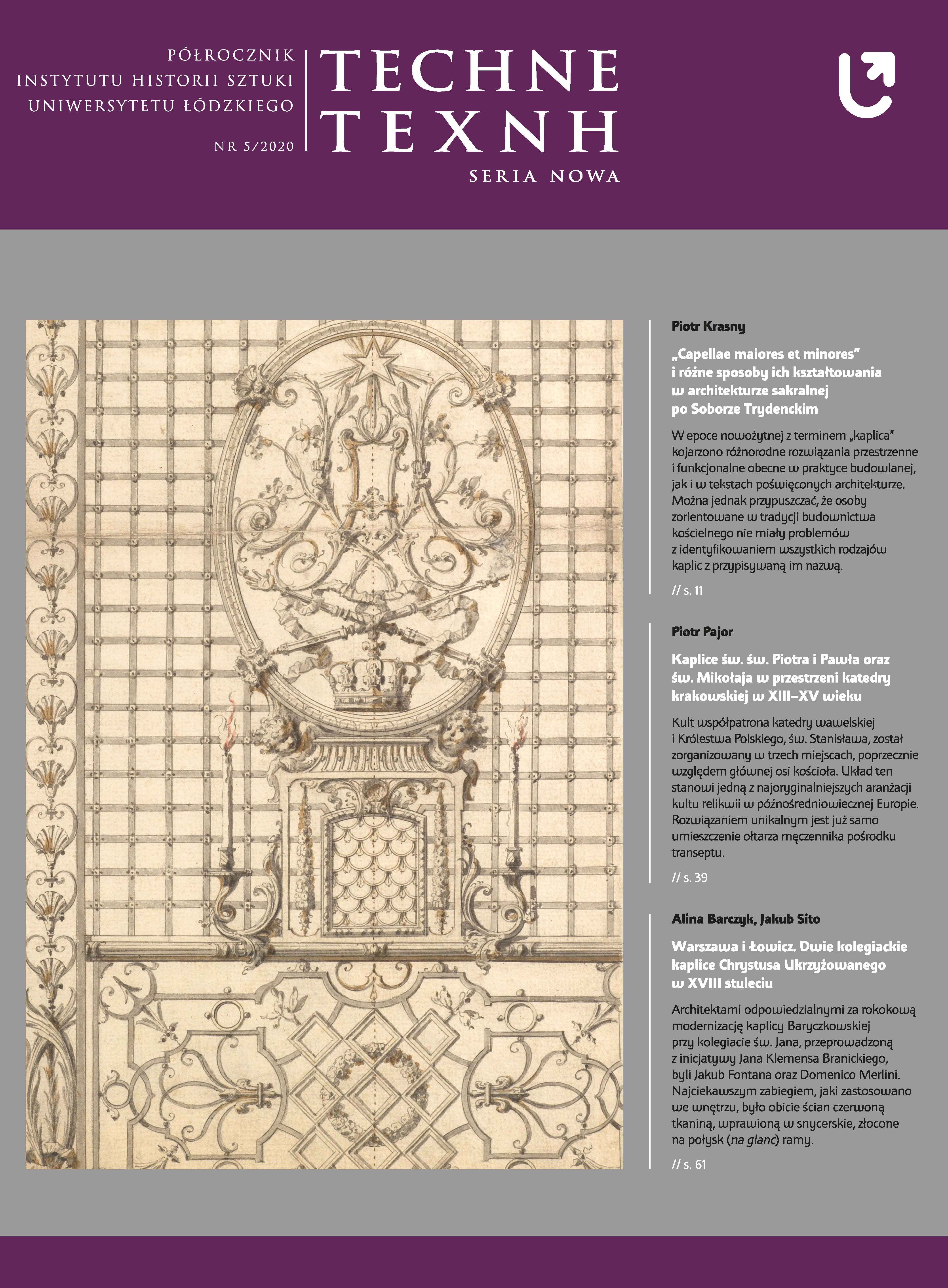„Capellae maiores et minores” i różne sposoby ich kształtowania w architekturze sakralnej po Soborze Trydenckim
“Capellae maiores et minores” and the different ways of shaping them in sacral architecture after the Council of Trent
Author(s): Piotr KrasnySubject(s): Fine Arts / Performing Arts, Architecture
Published by: Wydawnictwo Uniwersytetu Łódzkiego
Keywords: early modern sacral architecture; early modern theory of art; sepulchral art; liturgy after the Council of Trent; chapel; sacred space in early modern period
Summary/Abstract: In Instructiones fabricae et supellectilis ecclesiasticae published in Milan in 1577, in line with the tradition formed in the Middle Ages, the term capella was used to describe a part of the church interior, definitely designated as the place for altar. There, the term capella maior was referred to the church’s presbytery, and capelle minores – to the strings of identical chapels, adjacent to the sides of the nave, and sometimes also to the transept. Capella maior was already losing its spatial separateness as a result of liturgical reforms introduced after the Council of Trent. In Italy and in most European countries, it was then that great importance was attached to gathering the people at one solemn Holy Mass, at the same time striving to make its celebration as visible as possible to the gathered worshipers. Therefore, the choir partitions were removed, and the presbyteries were cleaned from elements emphasizing their spatial distinctiveness on the one hand (reliquaries, miraculous paintings, impressive tombstones), and on the other, distracting the attention of the worshipers from the celebration of the Holy Sacrifice. Such activities – strongly recommended in Instructiones – meant that the presbytery was very strongly (both spatially and ideologically) integrated with the body of the church, as a result of which in most languages it ceased to be called a chapel. On the other hand, in the documents of church factories such a term was applied to annexes connected very loosely with the space and body of the temple, to which the saints and tombstones from the presbytery were “transferred”. The construction of two such structures by the popes at the larger basilica of Santa Maria Maggiore in Rome became the confirmation of this practice by the highest authority in the Church. However, Instructiones and other Counter-Reformation texts on church shaping did not record the rapid spread of an “autonomous” chapel in sacral architecture. The Milanese work describes only the way of shaping the strings of capellae minores, so a solution present in the Italian architecturefrom the late Middle Ages. The reason for this choice was probably the fact that the chapels adjacent to the nave fulfilled a specific tradition in the liturgy in the church, and the role of autonomous chapels in this field remained insignificant.Due to the well-established local tradition in the South Netherlands, there was no integration of the spaces of presbyteries and churches in this area. In this area, Catholicism was restored after the period of violent Reformation, which meant that in the churches, first of all, elements destroyed by iconoclasts were reconstructed. Therefore, in the cathedrals and collegiate churches, with the consent of the Holy See, the partitions separating them from the corpus were reconstructed. Behind these partitions, imposing tombstones of bishops and canons were built, because only these spaces were supervised by higher clergy, while the corps were under the administration of municipalities. In Flemish, the presbytery was thus still described with the term (grote) kapel, while the side chapels, usually built between the buttresses of great Gothic churches, were called chapels (kapelletjes). Thus, in the modern era, the term “chapel” was associated with various spatial and functional solutions, both in construction practice and in texts on sacral architecture. Therefore, one should limit himself to noticing the complex presence of chapels in the history of modern architecture, and not try to formulate a precise and unambiguous definition of this type of building.
Journal: TECHNE. Seria Nowa
- Issue Year: 2020
- Issue No: 5
- Page Range: 11-37
- Page Count: 27
- Language: Polish

